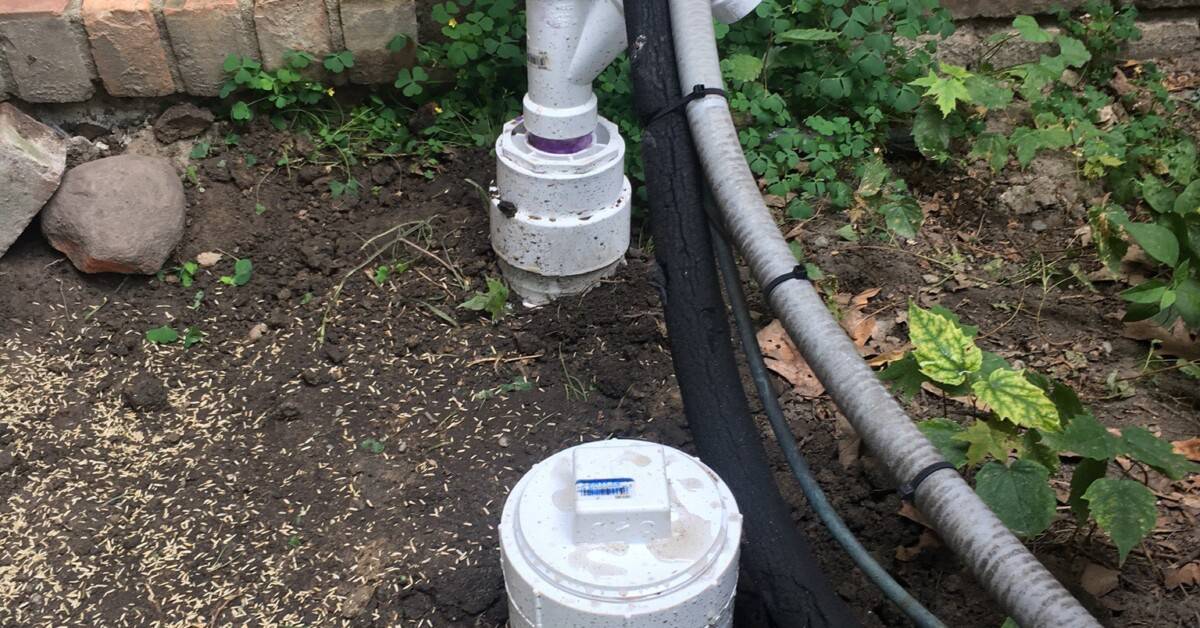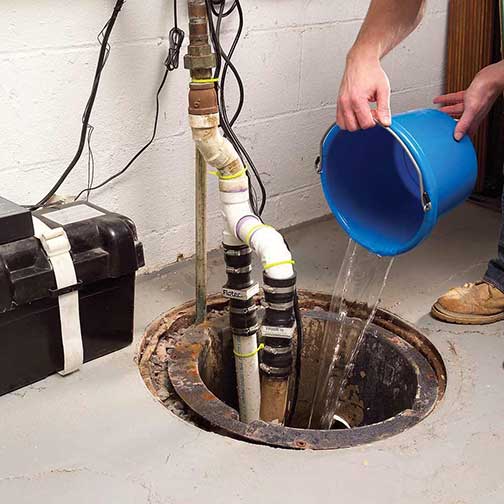Leading Steps for Taking Care of Your Sump Pump
Leading Steps for Taking Care of Your Sump Pump
Blog Article
Everybody maintains their private views with regards to How to Care for Your Sump Pump.

Sump pumps are crucial components in several homes, especially in areas prone to flooding or extreme dampness. They assist avoid water damages by effectively getting rid of excess water from basements or crawl spaces. However, like any other device, sump pumps need normal upkeep to guarantee they function effectively when needed the most. Cleaning your sump pump is a crucial part of its maintenance, and understanding how to do it correctly can save you from costly repairs and prospective disasters.
Introduction
Preserving a tidy sump pump is essential for its correct functioning and long life. Ignoring this essential job can bring about obstructions, malfunctions, and eventually, water damages to your residential property. Therefore, finding out how to clean a sump pump is critical for homeowners who rely upon these devices to maintain their basements dry and secured.
Understanding the Sump Pump
Prior to diving right into the cleansing procedure, it's essential to have a basic understanding of how a sump pump functions. Usually installed in a pit or container listed below the basement floor, a sump pump includes a number of crucial components, consisting of a pump, a float switch, and a discharge pipe. When water accumulates in the pit, the float button triggers the pump, which after that pumps the water out via the discharge pipe, far from the structure's foundation.
Indications of a Dirty Sump Pump
Knowing when your sump pump needs cleansing is crucial for preventing possible breakdowns. Some common indicators that indicate a dirty sump pump include weird noises during procedure, minimized water circulation, and noticeable particles in the pit. If you discover any of these signs, it's vital to cleanse your sump pump quickly to avoid any more issues.
Planning for Cleansing
Before you start cleansing your sump pump, it's important to take some security precautions. Begin by turning off the power to the pump to prevent any kind of electric accidents. Furthermore, use suitable protective equipment, such as handwear covers and safety glasses, to secure yourself from dirt, debris, and potential microorganisms.
Step-by-step Overview to Cleansing a Sump Pump
Shutting down the Power
Begin by separating the power supply to the sump pump to stop any type of accidents while cleansing.
Eliminating Particles and Dust
Make use of a bucket or a scoop to get rid of any noticeable particles, dirt, or sediment from the sump pit. Dispose of the debris correctly to stop it from clogging the pump or the discharge pipeline.
Cleaning the Pump and Drift Switch Over
As soon as the pit is free from particles, thoroughly remove the pump from the pit. Inspect the pump and the float button for any indicators of damages or wear. Use a soft brush or towel to clean up the surface areas and eliminate any type of accumulated grime.
Flushing the System
After cleaning the pump and float button, purge the sump pit with clean water to get rid of any type of remaining dirt or debris. This will aid guarantee that the pump operates efficiently and successfully.
Looking For Correct Functioning
Prior to reinstalling the pump, execute a quick examination to make sure that the float switch triggers the pump appropriately. Put some water into the sump pit and observe the pump's procedure. If everything is operating properly, you can reassemble the pump and reconnect the power supply.
Maintenance Tips to Keep Your Sump Pump Clean
In addition to periodic cleaning, there are several maintenance tips you can follow to maintain your sump pump in ideal problem:
Conclusion
Cleaning your sump pump is a crucial facet of its maintenance and makes certain that it operates efficiently when you need it one of the most. By following the actions laid out in this overview and incorporating regular maintenance right into your regimen, you can prolong the lifespan of your sump pump and secure your home from water damage.
6 STEPS ON HOW TO CLEAN A SUMP PUMP PROPERLY
UNDERSTANDING SUMP PUMPS
Your sump pump plays a crucial role in protecting your home by managing and removing excess water. It primarily functions as a “shield”, guarding your basement against the damaging effects of water accumulation. The pump is housed in a sump pit in the lowest part of your basement, and its job is to pump out any water that collects there.
During heavy rainfalls or when snow melts rapidly, water can infiltrate your basement, posing potential risks like flooding, structural damage, and harmful mold growth. Here, the sump pump springs into action, pumping out the intruding water and directing it away from your home.
SAFETY FIRST
Before cleaning, remember to prioritize safety. Disconnect the sump pump from the power source to prevent any accidental electric shocks. Also, wear sturdy gloves to protect your hands from any sharp or dirty components within the pump.
REMOVE THE SUMP PUMP
After ensuring your safety, the next step is to remove the sump pump from its pit. Doing this might require careful maneuvering as you don’t want to damage any pump components. Once removed, clean the sump pit to remove any accumulated debris or sludge.
INSPECT THE PUMP
Inspect the pump for any visible signs of wear or damage. Check the power cord, float switch, and impeller housing. If any components look worn out or damaged, consider replacing them to ensure optimal performance.
CLEAN THE PUMP
Thoroughly clean the pump with warm, soapy water. Make sure to rid it of any dirt, gravel, or other debris that might impede its performance. You can use a toothbrush to clean the small, hard-to-reach parts of the pump.
REINSTALL THE SUMP PUMP
Reinstall the pump into the sump pit Make sure it’s positioned correctly to remove the water effectively Once it’s back in place, reconnect it to the power source TEST THE PUMP
Finally, pour some water into the pit to ensure the pump works correctly. It should start automatically and begin pumping out the water; if it doesn’t, check the power source and the positioning of the pump.
Remember, while cleaning your sump pump is an essential part of home maintenance, hiring a professional plumber for a thorough inspection and cleaning at least once a year is also important. This will ensure that your pump is in optimal condition, ready to protect your home from potential water damage.
BEST PRACTICES FOR CLEANING SUMP PUMP DISCHARGE PIPES
Regular Inspection: Regularly inspect your discharge pipes, especially during heavy rainfall or snowmelt periods. Look for any signs of blockage or damage. Early detection of problems can prevent serious issues down the line. Periodic Cleaning: Over time, sediment and debris can accumulate in the discharge pipes, impeding the flow of water. Regular cleaning helps keep the pipes clear and functioning efficiently. You can use a high-pressure water jet to effectively clean the pipes. Insulation During Winter: In colder climates, discharge pipes can freeze, blocking the outflow of water. Protect your discharge pipes from freezing temperatures by insulating them with foam pipe insulation. This will ensure the sump pump can continue to discharge water even in freezing conditions. Proper Positioning: The discharge pipe should be positioned to direct water away from your home’s foundation. Improper positioning can lead to water seeping back into the basement. Ensure the pipe is long enough and angled correctly. Installation of a Check Valve: A check valve prevents water from flowing back into your sump pit after the pump has pushed it out. Installing a check valve helps maintain the efficiency of your sump pump and reduces the risk of flooding. Minimize Pipe Turns: Every curve or turn in the discharge pipe can decrease the efficiency of water flow. By minimizing turns and bends in your discharge pipe, you can increase the efficiency of your sump pump. https://www.fullspeedplumbing.com/how-to-clean-a-sump-pump-properly9999/

As a fervent reader on , I assumed sharing that information was a great idea. Enjoyed our write-up? Please quickly share it. Let other people check it out. We value your readership.
Information Here Report this page